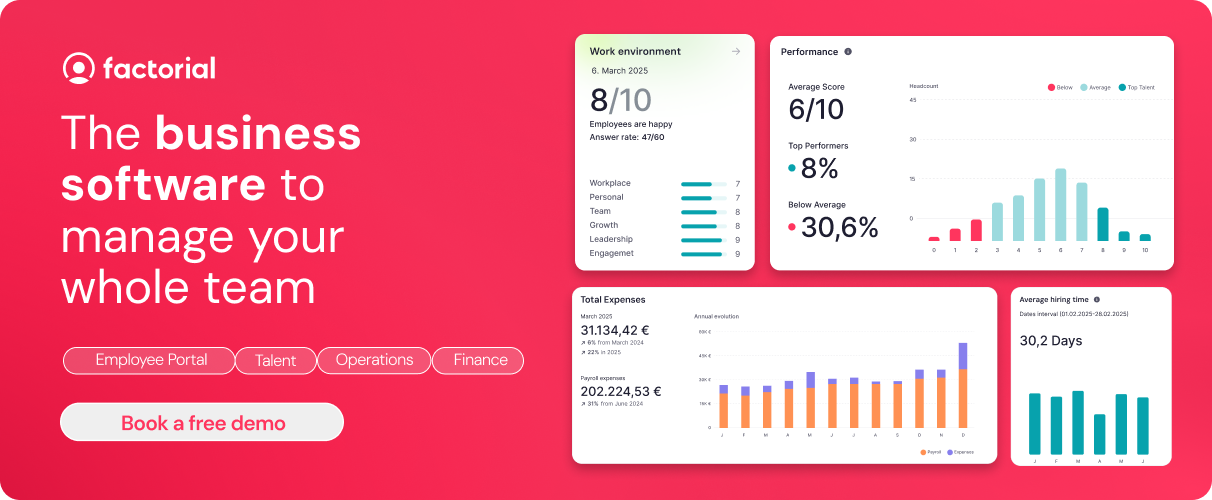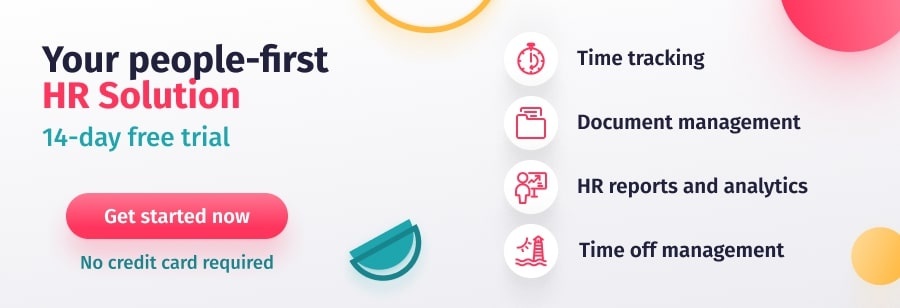We all know about the value of coaching in sports, but what about coaching in the workplace? Just like a coach can help an athlete achieve their potential, a workplace coach can guide employees to build skills, improve performance and meet their goals.
Hockey coach Ric Charlesworth said, “the interesting thing about coaching is that you have to trouble the comfortable, and comfort the troubled.” Coaches take a proactive approach to employee growth, giving confidence to those who need it and helping to pinpoint and resolve problem areas. It isn’t always easy, but research shows that coaching pays off: coaching and mentoring employees in the workplace can create a return on investment of 5.7 times the cost.
So, is it time for your team to try the coach approach?
- What is Coaching in the Workplace?
- Benefits of Coaching in the Workplace
- Benefits of Coaching in the Workplace
- What is the role of a coach in the workplace?
- Why is coaching important in the workplace?
- Types of coaching in the workplace
- How to Coach and Mentor Employees
- Examples of Coaching and Mentoring in the Workplace
- 5 Tips to Improve Coaching and Mentoring Practices
- Effective Coaching and Mentoring Processes
- Talent Development with Factorial ✅
What is Coaching in the Workplace?
As Bill Gates said in one of his famous TED Talks:
“Everyone needs a coach. It doesn’t matter whether you’re a basketball player, a tennis player, a gymnast or a bridge player. We all need people who will give us feedback. That’s how we improve.”
So, what does this mean in the business world?
Coaching in the workplace, also known as workplace coaching, employee coaching, and business coaching is when one person, usually a manager, helps an employee grow and develop their skills. It forms a part of a company’s learning and development program, usually tied into an individual employee training program.
The main aim of workplace coaching is to promote two-way communication between an employee and their coach in order to identify areas for improvement, reinforce strengths, and further develop their performance. This is usually done by focusing on specific performance objectives, skills and goals.
It’s all about empowering employees to be the best performers that they can be.
Business Management Software made simple, powerful, and scalable.👇

Benefits of Coaching in the Workplace
Now that we’ve discussed the definition and the purpose of workplace coaching, let’s take a look at the benefits of implementing a coaching program in your business:
- Coaching in the workplace is an effective way for you to set up your employees for success. This is because your primary aim is to provide them with the tools that they need to increase their knowledge and improve their skills.
- The right coaching program can motivate your employees to improve and take pride in their work, leading to higher job satisfaction and increased productivity.
- You can also use coaching to validate, support, and empower your employees, improving employee engagement and commitment levels.
- Studies have shown that executives who received coaching in the workplace were perceived by their peers as being 55% more effective. Coaching also has a positive effect on team effectiveness and productivity.
- One-on-one coaching sessions can help you foster a culture of learning and development that has a positive effect on the entire organization.
- Coaching encourages communication, reflection, and self-correction. This helps your employees become more autonomous so that they can take ownership of their work. It also helps you develop a more confident workforce, as people believe they have the right skills to perform.
- Finally, when employees are more aware of their strengths and weaknesses, they are more equipped to take on challenges and further their development.
What is the role of a coach in the workplace?
The purpose of coaching can be summarized in the maxim: “Give a man a fish and you feed him for a day. Teach a man to fish, and you feed him for a lifetime.” Effective coaching does not give employees the answers but rather supports them as they solve problems themselves.
Coaching is concerned with “how”: how to set and achieve goals, how to change approaches or attitudes, how to prepare for future roles. It is action-oriented and future-focused. A good coach draws out an employee’s strengths and helps them to leverage these strengths to increase effectiveness.
What is the difference between coaching and training? While training is an “event,” coaching is a process. Training may teach an employee a specific skill, but coaching will help the employee to apply those skills to their job and encourage them to learn complementary skills.
Coaching is also different from mentoring. While a mentor may guide an employee’s career development, coaching is a more formal structure with specific, measurable goals. The role of a coach in the workplace is to assist, challenge and encourage rather than direct, advise or teach.
Why is coaching important in the workplace?
Coaching employees in the workplace can lead to substantive benefits that ripple far beyond the individual. It can help bridge the gap between education and workplace experience. By helping employees build soft skills such as presence, communication, and influence, coaching improves inter-employee relations and overall team functioning. This means increased employee engagement and productivity.
As the coachee becomes more capable, the coach also has a chance to grow and to feel the gratification of helping team members to meet their goals. Coaching in the workplace improves satisfaction for both the coach and coachee. It also helps lower turnover and creates informed and invested leaders.

Types of coaching in the workplace
Coaching does not necessarily have to be top-down. There are several types of workplace coaching, each of which uses different coaching strategies to achieve different benefits.
Leader coaching
Leaders or managers coaching team members can offer valuable insights and help employees change ineffective behaviors. While meeting with employees in a coaching capacity, leaders must be careful to coach and not to manage. Typical management approaches, such as giving directions or reiterating expectations, may frustrate employees in this context and make them feel micromanaged.
Peer coaching
By pairing together employees of the same level, peer coaching allows employees to be candid about their concerns without the pressures of sharing difficulties with managers. Peers are best paired together when their problem areas are different (perhaps one struggles with interpersonal relationships and the other struggles to accept feedback) so that they can offer each other guidance and support. Employees will benefit from hearing directly from a colleague how their actions are affecting the team. With a little workplace coaching training, future peer coaches can be equipped with coaching skills to ensure effective (i.e. direct but kind) communication.
External coaching in the workplace
If a business has sufficient resources, it may be worthwhile to invest in an external coach who can provide an outside perspective and objective advice. Managers and employees can feel free to articulate problems without concerns about damaging relationships with colleagues. External coaches offer perspective and guidance with all the delicacy their expertise requires.
How to Coach and Mentor Employees
In an article on the importance of coaching, Atul Gawande asks if the “outside ears and eyes” of coaches are important for concert-caliber musicians and Olympic-level athletes, “what about regular professionals, who just want to do what they do as well as they can?” A coach’s eyes will help you see where you are falling short, even when you’re incapable of seeing yourself. Coaching in the workplace is the best way to develop an agile and adaptable team and take your game to the next level.
Before we look at a few examples of coaching and mentoring in the workplace, let’s discuss a few tips and best practices to help you design a program that gives you all the benefits we have just seen.
Identify Development Needs
Before you can begin coaching and mentoring employees, you should establish the need for coaching in the workplace. This means conducting a clear training needs analysis so that you can build a solid foundation for your coaching program.
Who should you offer coaching to? What knowledge and skills are lacking? Which development opportunities would have the biggest impact on performance? Do your employees understand the purpose of coaching in the workplace?
Factorial’s skills matrix template is a great tool for this. With this template, you can see how team members have developed, assess their level of interest in learning particular skillsets, and compare learned competencies with overall objectives.
Define Coaching in the Workplace Goals and Timeline
Once you have identified coaching opportunities in the workplace, you need to define clear goals and a clear timeline to meet your objectives. This means creating a development plan for employees with clear goals and expectations.
Set deadlines and establish clear benchmarks so that your employees know what they should be working towards. Help your employees structure their time so that they can manage their learning and development without feeling overwhelmed.
Find the Right Coaching Styles and Techniques
Another important step in workplace coaching is finding the right styles and techniques for each individual. This might be visual, kinesthetic, or auditory. Ask each employee which techniques would help them get the most from their coaching sessions.
Active Listening & Open Communication
One of the most important pillars of a successful coaching in the workplace program is encouraging active listening and open communication.
Encourage your coaches and mentors to create connections and develop safe spaces where employees feel secure enough to give honest feedback. This feedback is ultimately what should be guiding your coaching sessions, so it’s vital that your employees don’t hold back, and that your coaches engage active listening skills at all times.
Monitor Progress & Encourage 360 Feedback
Make sure you monitor the progress of your coaching in the workplace programs and encourage 360 feedback on a regular basis. And make sure you follow up on feedback and address any issues that are raised.
Finally, and perhaps most importantly of all, celebrate the accomplishments of your employees and remind them that each achievement represents a step forward. This will help them build their self-confidence so that they are motivated to further develop their skills.
Examples of Coaching and Mentoring in the Workplace
Now let’s look at a few examples of coaching and mentoring in the workplace. Here are a few scenarios in which you may benefit from coaching your employees.
Developing New Skills
The first and most obvious of the coaching in the workplace examples is developing new skills. Coaching and mentoring can help your employees develop skills they may be lacking. This might be when a new employee joins your team, or when the requirements of their position change. It might also be useful if there have been any changes to your work processes (such as updating technology).
Improving Job Performance
Coaching in the workplace is also a great tool for improving employee performance. For example, if an employee is underperforming and not meeting their objectives, a few coaching sessions might help them identify what’s preventing them from being as productive as they should be. The employee can then work together with their coach to monitor and improve their performance.
Promotions & Succession Planning
Finally, coaching in the workplace can be a very effective strategy for supporting employees as they transition into new roles within your company. The right coaching can give them the right tools to prepare for their promotion and help them establish new performance goals.
5 Tips to Improve Coaching and Mentoring Practices
Different approaches to coaching will yield different results. Here are five coaching methods in the workplace:
1. Coaching with curiosity
An effective coach is an active listener who offers understanding without passing judgment. A coach can help an employee to reflect on what they have said. It is important for coaches to remember that the golden rule here is: “Ask, don’t tell.” By posing open-ended questions like “What do you want to do?” or “How does this impact you?” or “Can you give me an example?”, a coach can help explore an issue so the employee can come up with a solution on their own.
2. Focus on problem-solving
Coaching should be future-focused. Coaches don’t stew in or ruminate on the past, but rather use past experiences to imagine how to approach future situations. A good coach helps lead a coachee to think of their setbacks as lessons and ask what can be done differently.
3. Coaching with goals in mind
One role of a coach in the workplace is to help staff set and reach their goals. A coach will try to determine what an employee really wants and help make a concrete plan with intermediate milestones and a plan for tracking progress.
4. Lead with empathy
A coach is looking for substantive, measurable change in an individual’s behavior. By offering constructive feedback and compassionately sharing personal experience (“I get it, I’ve been there myself”), coaches can connect with employees and help them to make strides.
5. Coaching in the workplace is an investment
Coaching isn’t a one-time meeting. It’s a multi-week process that requires check-ins to face obstacles and measure growth. A good coach makes sure to offer as much support as is needed. By offering and accepting feedback, a coach can create a relationship of trust and open communication. This helps nurture employees to build self-awareness, take responsibility for their actions and take charge of the future.
Effective Coaching and Mentoring Processes
As we have seen above, effective coaching and mentoring involve planning and implementing a number of processes.
Firstly, you need to identify skill gaps and development needs and create clear goals and objectives. Secondly, you need to pick the right coaches and decide which employees would benefit from the initiative. Thirdly, you need to decide how you will roll out your workplace coaching.
Will you focus on one-on-one coaching? Job shadowing? Roleplay activities? How will you collect feedback and monitor the process? And what incentives will you use to encourage your employees to embrace coaching in the workplace?
Above all, for it to be truly effective, you need to focus on developing a culture that supports coaching. And this means fostering a learning culture that aligns all your employees with the vision, mission, and values of your organization.
Ultimately, you need to create a safe environment where you encourage all your employees to develop their knowledge and skills. You need to offer them the right learning and development opportunities to help them perform at their best. Make sure they have the right tools, support, and resources. Show them that you support both independent and shared learning. Teach them the value of reflecting on their work and striving to continuously develop and improve. Show them the benefits of embracing coaching in the workplace.
This won’t just help your employees perform to the best of their abilities; it will also help your organization grow and boost the bottom line of your business.





Thank you for sharing your ideas, it really helps me a lot. Continue blogging and keep on doing your passion. I
The conversation around leadership and coaching in the workplace is definitely one that needs to be had. Glad you enjoyed the article!